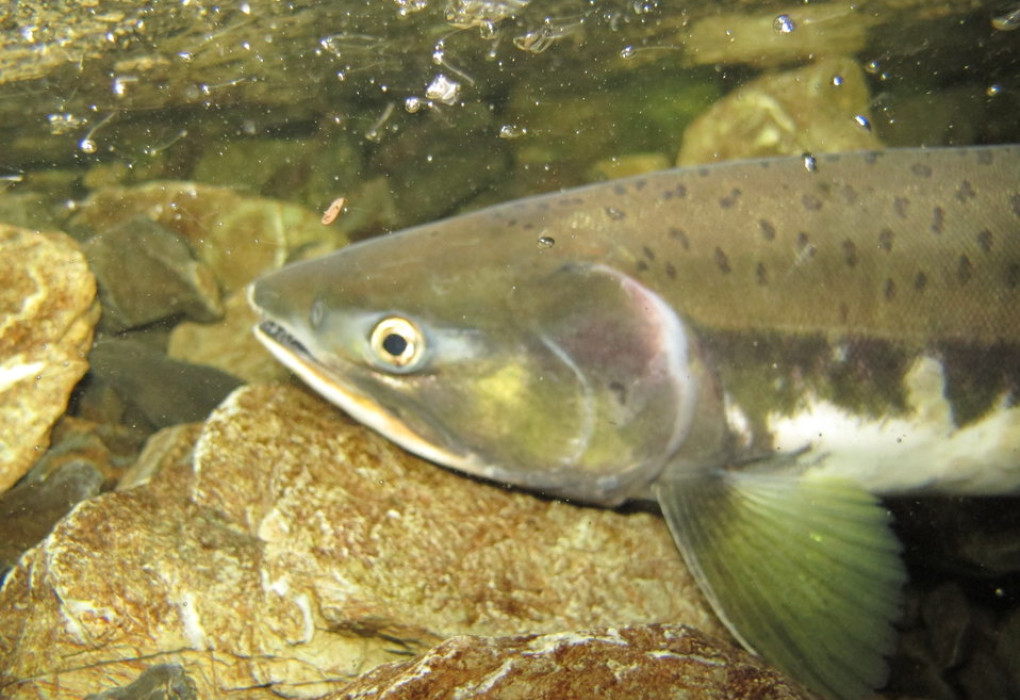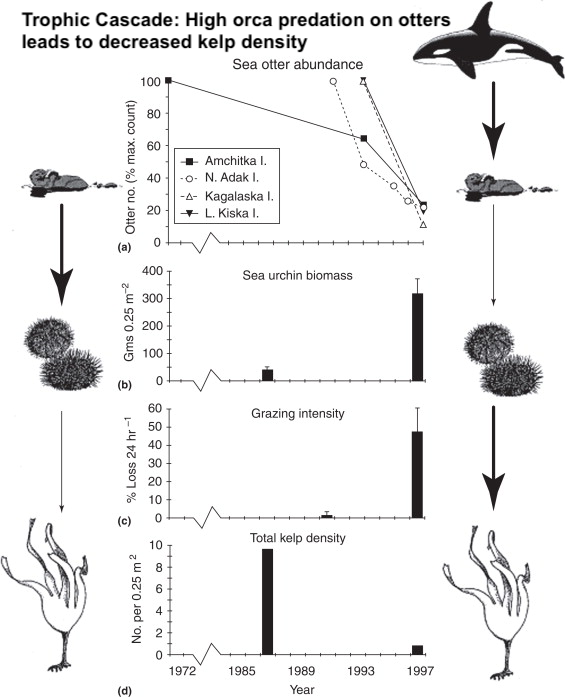Are Pinks to Blame?
Earlier this fall, an important scientific paper reviewing the marine ecosystem-wide effects of pink salmon was published. In it, the authors summarize all the ways pink salmon compete with other species of salmonids in the marine environment and even drive population cycles in whales and seabirds. The evidence presented in the paper paints a damning picture of the ecosystem effects of massive hatchery releases of pinks in the north Pacific.
“Trophic Cascades” and “Carrying Capacity”
Before digging into the guts of the paper, we need to define some important terms. First, what is meant by a “trophic cascade”? Simply put, a trophic cascade happens when the abundance of one step in a food chain drastically increases or decreases, causing extreme changes in the population sizes of all other species in the food chain. A classic example of a trophic cascade is the huge reduction in sea otter populations resulting in a huge increase in sea urchins (the main prey of otters) that then massively reduce bull kelp abundance.
Carrying capacity is the number of individuals of a certain species an ecosystem can support and is determined by the most limiting factor in an ecosystem. For example, the amount of water available in a desert might determine how many toads can live there. But carrying capacity is not a static number; it can change over time. Going back to our example, a good water year will support more toads than a drought year. For a long time, we’ve thought of the ocean as basically having an unlimited carrying capacity for salmonid species as we’ve always thought that the freshwater environment is more limiting. However, with climate change, that assumption is being reevaluated.
The Role of Pinks in Marine Food Webs
Due to its large size and complexity, it’s difficult for us to fully understand marine food webs. Fortunately, the highly fixed nature of the life history of pink salmon can help us tease apart the role they play in marine ecosystems. As juveniles, pinks migrate to the ocean soon after emerging from their redds, where they spend 16-18 months maturing before returning to their natal streams to spawn. Because of their strict 2-year life cycle, even- and odd-year populations are distinct, and the abundance of pinks in the North Pacific is much higher in odd years than even years. This creates a kind of natural experiment that allows researchers to untangle possible influences of pinks from other factors. Furthermore, due to a recent increase in the hatchery production of pinks, scientists have another line of evidence to investigate how pinks affect marine food webs.
The recent publication led by Ruggerone found evidence that pink salmon have strong effects on their preferred prey items, such as squid and zooplankton, that reverberate throughout the North Pacific marine food web, causing a trophic cascade (Fig 16 from Ruggerone et al., provided below). In particular, high numbers of pink salmon are likely to cause decreases in the survival and size of Chinook. Reduced body size in Chinook is linked to lower egg production, further driving down populations. All other species of Pacific salmon are negatively affected by years of high abundance of pink salmon as well. Because steelhead have the unique behavior of migrating to the open ocean and feeding more from the surface, they have the least amount of overlap with pinks, but they still have enough diet overlap to be negatively affected by large numbers of pinks.
But it’s not just other salmon species that are affected by pinks. Wild pink salmon compete with large numbers of hatchery pinks, reducing the size and reproductive success of the wild fish. The trophic cascade caused by pink salmon can cause declines in species as varied as resident orcas and even seabirds.
Climate Change and Hatcheries
What gives pinks such a strong advantage over other salmon? Pink salmon are the smallest salmon and are the most efficient at foraging and turning prey into biomass at warmer ocean temperatures. As marine heat waves become more frequent and intense, pinks are emerging as a climate “winner” compared to other species of salmon, particularly Chinook.
Climate change is also altering prey densities and the carrying capacity of the ocean. Previously, it was believed that the marine system was non-limiting and any density-dependent interactions between salmon took place in rivers. Now that Alaska and Japan have been producing large numbers of hatchery pinks, we know that isn’t the case. While the exact mechanisms aren’t necessarily clear, there is a strong correlation between high returns of pinks and lower productivity of other anadromous salmonids, seabirds, and whales in the North Pacific.
Future Outlook
So how do we use this information to improve salmon management? It is likely that pink salmon will be the most resilient to climate change–so do we explicitly manage for their abundance?
We believe that retaining as much biodiversity as possible is the best path forward through climate change. That means drastically reducing the hatchery production of pinks while protecting and restoring key habitat for steelhead and other salmon species. This course of action will preserve wild pink salmon while giving other salmonids an opportunity to adapt to climate change.


